FISHING IN ITALY: A SECRET PARADISE
If you’re on the trail of the “best kept secret” amazing fishing in Italy for all styles and species then this page is THE place to start. Over time we’ll just keep on creating and adding more and more new information here that reveals an ever-increasing range of destinations, tactics and target species (yellow pike, marble trout, bass, grayling, sea-bass and more) – not only tenkara! Just enjoy while we introduce them all with the help of the wonderful Vito “Tsurikichi” Rubino…
You can be notified of each new instalment/species and updates when you sign up to Vito’s “Italy on the Fly” news:
Page Contents QUICK LINKS:
Part 1: Welcome to Italy
Part 2: The Beautiful Apennines
Fishing in Italy Part 1: Welcome To Italy
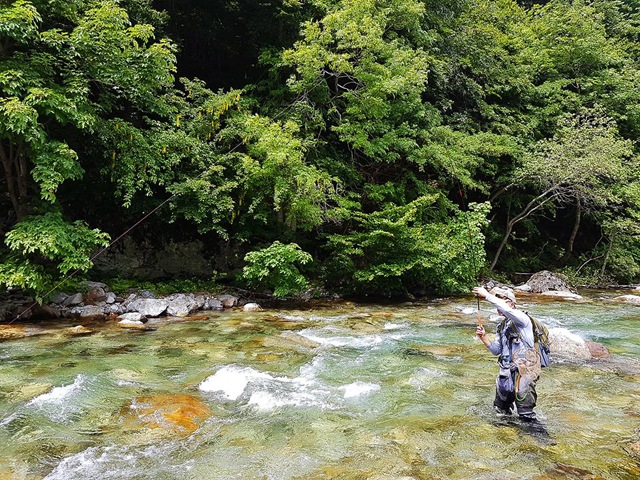
Recreational fishing is deeply rooted in the Italian culture since the dawn of time. A big reason for this is that Italy was not a single nation but a tangle of many different populations – all crossing and mixing with each other. With each ancient culture, skills in fishing were a necessary tool to hand down (first for survival and then as part of social identity).
Every area of Italy has its own traditional and cultural way to deal with the Sport and even if back in the days it was vital in terms of food gathering for survival, that fun part (not to mention the ego-fullfilling part) has played an important role, I should say crucial role, in the story of rod & line fishing in Italy. And just as you would be surprised to hear that the accent of a population changes in just a stone’s throw, you would be amazed by the variation in terms of fishing techniques targetting the same fish.

It’s a titanic attempt just to think to explain fishing in Italy by a set of articles
Where should we start? With the Romans? Before? And how can I talk about fishing in Italy without relating it to the local culture? And where is local? (southern, central or northern)?
There will be time to go through all of that, but I would like to introduce you to the Italian Fishing experience as it is nowadays, with a taste of all it can offer.
Fly Fishing in Italy
Whenever I meet a fly angler, for example, the script is always the same and it goes, more or less, like this:
“Where does your accent come from?” (I love the polite way British address this kind of question, not to make it personal and keeping it “politically correct”. Very British!)
“Italy sir”
“Ohhhhh ITALIAAA… any good fishing down there?”
“Indeed. You would be amazed. I bet you heard about fly fishing in Slovenia and you match it in your mind with a fly fishing heaven don’t you?”
“Yes, of course”
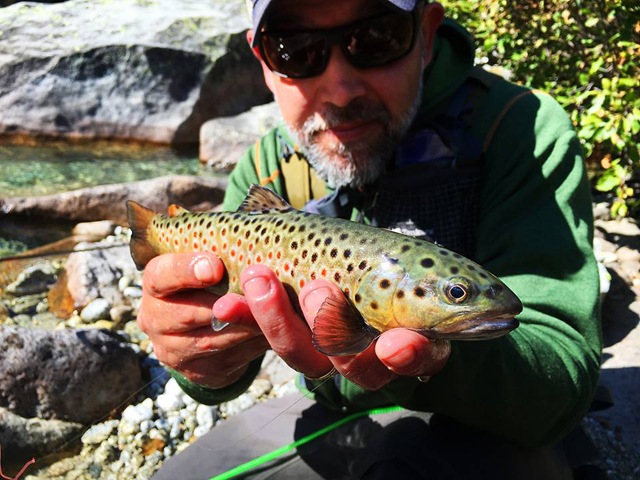
“Well, Italy is at the border and a big part of Slovenia was actually in Italy before the end of the WWII. Most of the famous rivers have Italian and Slovenian names, crossing the borders on their way. We have marble trout, brown trout, brook trout, rainbow trout, grayling… not to mention coarse fish like Pike, Carp, Chub, Perch, Zander, Asp, Wells Catfish, sea-run Twaite Shad and you name it. Not to mention the saltwater as well! And do you know we have an unique trout that exist just in Italy: the Macrostigma trout that was also described by the Roman author Cicero?”
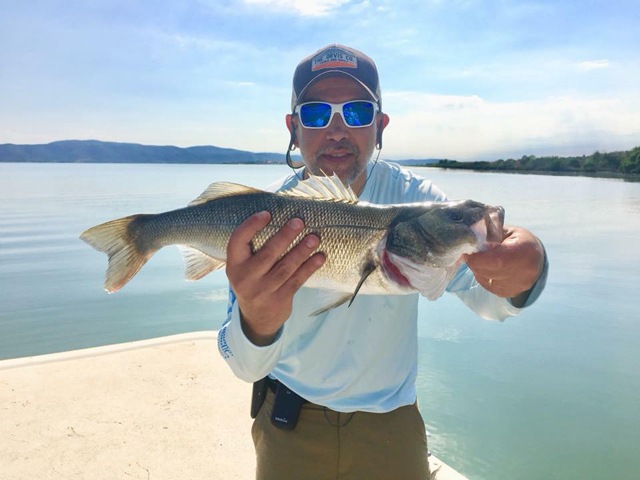
“Wow, I didn’t know that. Should check it out, especially because beside the fishing I could enjoy Italian food, Italian wine, go to the Opera, visit a Museum or relax on a lake or on the seaside. Also my wife would love it!”
I could sing this dialogue in my mind as a song, and the lyrics are always the same. You can see some of the beautiful sights for yourself in my Gallery Page in the “Italy on the Fly” site.
Fishing in Italy: The “Japanese Connection”
Well, the easiest way for me is to begin is to refer to the cultural context where my fishing mental illness started (Fishing should be recognised as a mental illness and all anglers should be on “benefits”, we all know that).
The first thing you might ignore is that any Italian boy or girl, at least until the 1990s, grew up watching Japanese cartoon.
One of the most famous cartoon back in the days was “Sampei”, which is known in its home nation as “Tsurikichi Sanpei” where Tsurikichi means “Boy crazy about fishing” and that’s what I am and what I have always been.
I did not miss a second out of 109 episodes. He used to catch trout, carp, salmon, marlin and whatever could swim in the waters he fished (and even in the mud…). He used to share his passion with friends, whether they were locals, from abroad and a fellow fisher-girl avoiding any gender issue fishing related and very much “politically correct”, way before any “50:50 on the water” projects arose.
I used to watch it and then practice his fishing methods and techniques, watching the episodes more as tutorials rather than entertaing myself, doing crazy experiments in my city apartment in Rome (to the joy of my mother and my grandparents having to deal with an incredible mess).
My room became a lake, the corridor a river and the walls the banks.
And you bet, those techniques worked a lot whenever I managed to persuade an adult to take me fishing, using heart-breaking puppy eyes. Bless them.

No wonder my family and friends used to call me “Sampei”, and that was quite a common and widespread nickname for everyone who was passionate enough about fishing.
Sampei Experiment for You
Please, I want to tempt you with an experiment: Ask any Italian (not an angler, could be anyone) over thirty: “Do you know Sampei?”
I am quite confident you will get a yes-rate of 99.9%.
So it’s an easy guess to say that recreational fishing is strongly imprinted in the Italian DNA, regardless of the spot and the fishing method. Perhaps it is not so surprising. Catholic education used to blend into a strange kind of Bushido, where high values such as respect and love for the other encountered discipline and duties towards the family and the society.
At least that was the target, an educational attempt taking into consideration the energy of kids with all their seeking of freedom, direction and self-awareness.
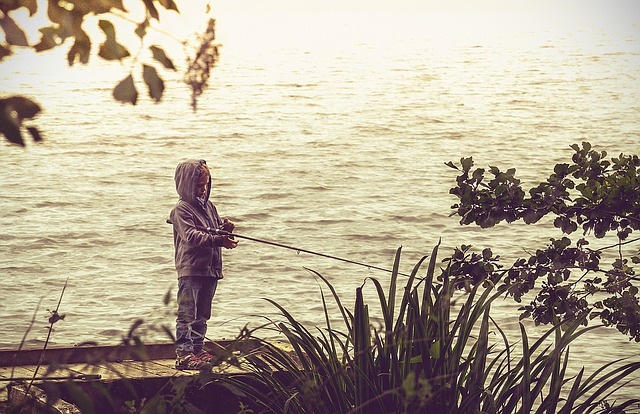
Our Italian kids days, from the north to the south, were pretty much the same: going to school, come back and have lunch with the family, watch a bit of telly before the homework or for a break, go out and play football (I still have no idea of what the girls were doing those days instead of playing with a ball… not a clue). But make no mistake, Sampei is a major cultural figure for anyone connected to fishing in Italy.
Fishing in Italy: Geography & “La Dolce Vita”
From the mountain to the valley, from the rivers to the lakes and, from the Alps and Apennines to the river mouths to the coasts you will find waters to fish, precious trophy to target, local culture to meet, food to eat, wines or local spirit to drink, museums and monuments to visit… I could go on for three pages.
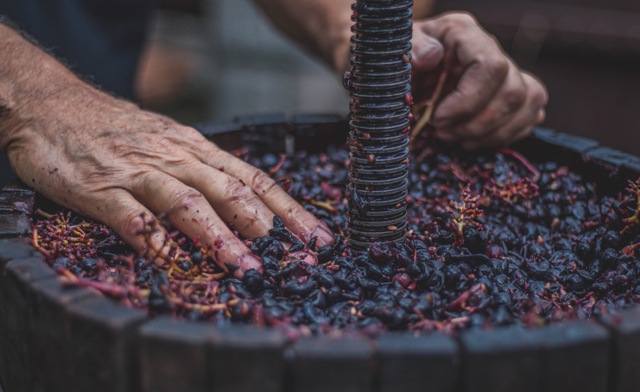
Then there is just the simple scope of fishing that the geography creates…
- The Italian amount of waters is huge, estimated in 7494 rivers and carriers and 347 proper lakes.
- Not not mention 7456 kilometres of coastline, which is about 4633 miles!
That easily explains how fishing got into our skin, into our daily habits, costumes and cultures.
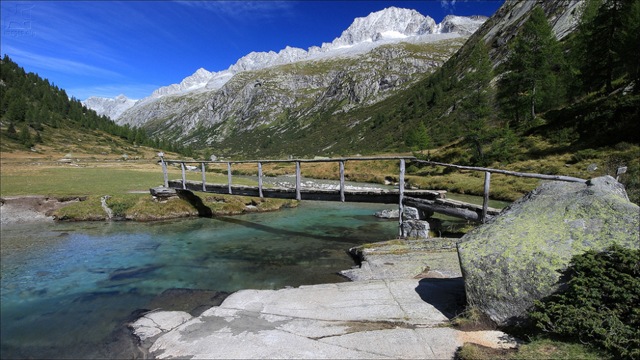
We find quotes of fishing for trout and other species in Cicero, Aeliano and many other Roman poets, historians and authors.
Romans used to have fisheries to breed sea bream, sea bass, eel, mullet, moray and you name it.
The journey into the Italian fishing is deep and very entertaining, and you can be sure it will amaze you and offer you the perfect location to enjoying fishing, however you may conceive it, blending it with art, history, food and, why not, a bit of relax and “dolce vita”.
So let’s start our journey and let me tell you, with my arms widely open:
Welcome to Italy… Benvenuti in Italia!
COMING NEXT – FISHING TRADITIONS OF THE APENNINE MOUNTAINS – Including “SCURIAZZO” (the whip) & THE GRASSHOPPER…
Vito
Fishing in Italy Part 2: Apennine Mountains
Guys, the Italian Apennine landscape is where we step into fairytale mountain forests, rivers and waterfalls straight out of a story-book. Mossy trees, cool clear rivers, lakes and wild forest animals (that sometimes get lost and head downtown!). You half expect to discover Red Riding Hood and Grandma’s cottage in the woods (complete with the big bad wolf).
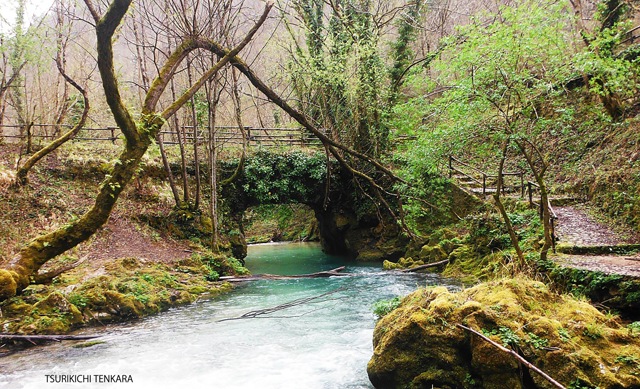
By the end of this – you’ll find out why you want to catch a “Grandma Trout” too…
SO, in this section, we’re also going to discover some unique trout (don’t miss Salmo fibreni later on in the piece!) PLUS multiple traditional methods of fly fishing, bait fishing including the the intriguing art of “live grasshopper dapping”.
We’ll even throw in real-life cowboys, herds of buffalo, spaghetti westerns, Italian “chalkstream” fishing, monastaries cut into the rock, Rocky Marciano as well as Buffalo Bill himself getting a lesson he never forgot.
Let’s do this…
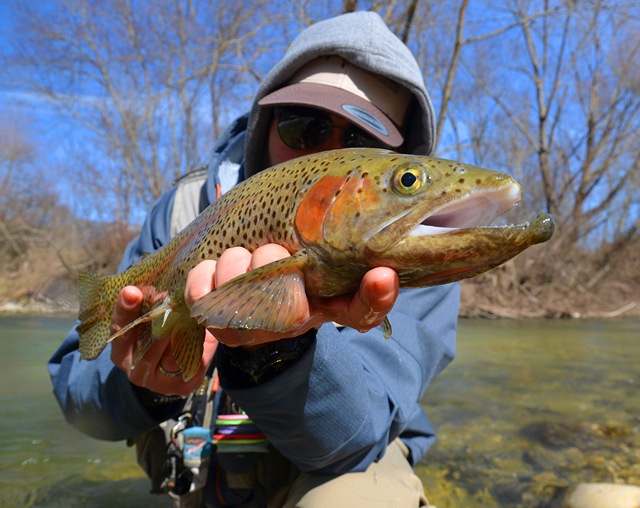
What are the Apennines?
They are the “backbone” mountain range running roughly southeast to northwest along the Italian peninsula. Compared to the Northern Alps (which are higher, whiter and a bit more stark in their beauty); Apennine landscapes tend to be more lush, overgrown and full of life.
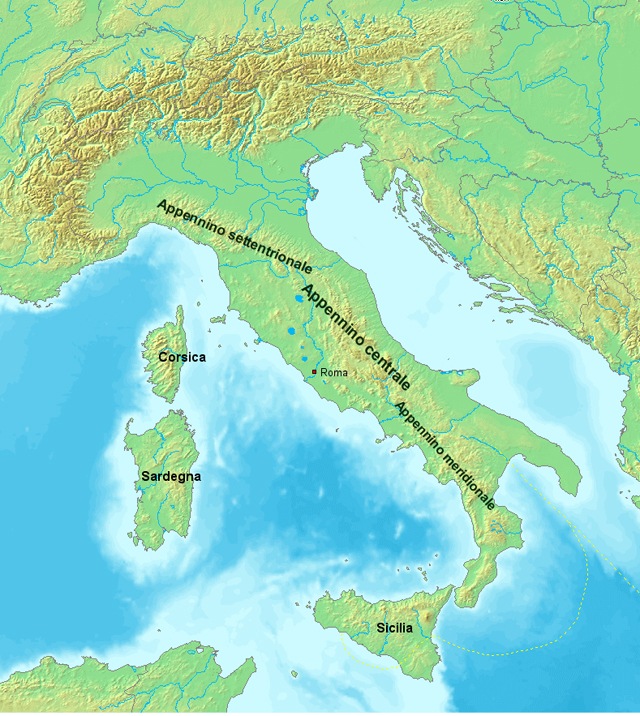
The Apennines – Appennino in Italian
We’ll fill in more local details as we go on. But first, let’s talk fishing (PS, to make sure you don’t miss any of the next installments, just apply to be in on the Italian Insider News List:
Fishing in Italy: Traditional Bait Fishing
If you’ve ever come across Japanese “keiryu” bait fishing, you’ll find the Italian fishing remembered by Vito from his childhood in the Apennines very familiar (I described keiryu methods in my grayling fishing article here).
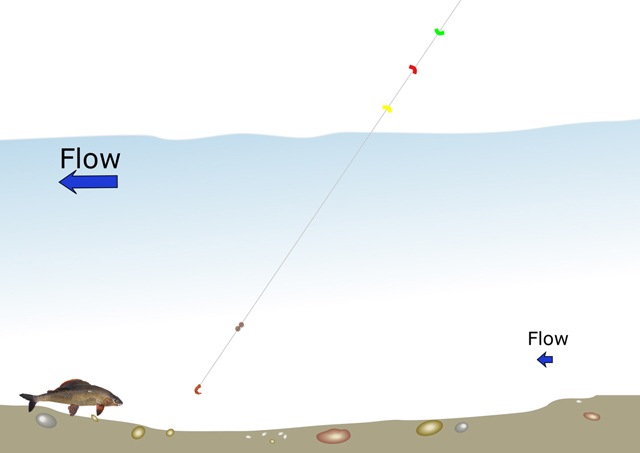
Typical Japanese Keiryu Bait Fishing Rig
With that in mind, let me introduce Pesca alla Casentinese to you:
The Casentinese style: Pesca alla Casentinese
Originally using simple cane rods – but now with modern telescopic/lockable “teleregolabile” (adjustable “zoom” rods that can be locked at specific lengths) carbon models. This is a simple fixed-line style of fishing in Italy, involving a deft touch and a good knowledge of rivers and fish. A couple of metres of fairly coarse line, small weights each known as “corona” (or “crown” in English) attached close to the relatively large hook and you are good to go.
Often the bait would be gathered from near to the fishing spot (again, much like the Japanese keiryu bait fishing tradition). The long 4 to 5 metre rods allow close control of the drifting bait – and a tuft of wool or yarn (again JUST like those used in Japanese keiryu rigs) give great sensitivity. Strangely, for such long rods, the tactics are ideal for heavily tree-lined small streams.
This comes from the use of short lines and then the practice of collapsing the rod down to a short enough length to land the fish. It was an ideal method in Post-war Italy to catch trout from the lush mountain rivers of the Apennines.
There are even videos (like the one above on YouTube) showing folks extending the original concept of travelling into the mountain forests to find good fishing grounds to tackle with these portable rods by using trail bikes to access the tough terrain!!
Grasshopper (Cavalletta) Fishing
As we’ll explain soon (by looking at the strongly identifiable character of culture and all activities in each different region in Italy), the grasshopper “dapping” of Simbruini is very much a product of its geography.
It sits right on the boundary between bait fishing and simple fixed-line fly fishing. The large and strongly-coloured grasshoppers of the region make a delicious mouthful for trout and all fish. To preserve the very highest attractive qualities, each live grasshopper is NOT pierced by the hook-point. Instead, like a classic literal joke about “fly tying” the insect is lashed by thread wraps onto the shank.
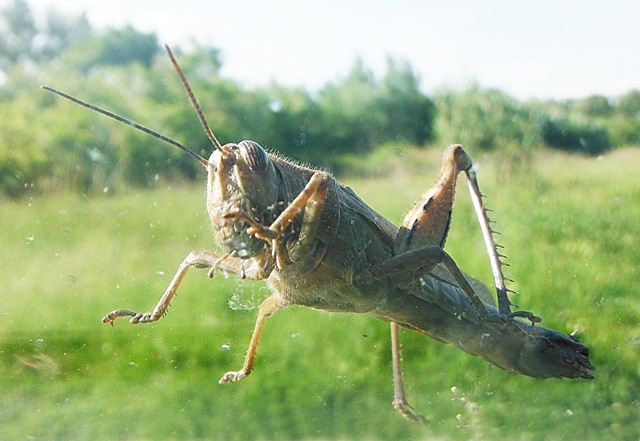
A simple level casting line – with no added weights for casting – is attached directly to the rod tip. Any rod that you could lay your hands on (river-cane, tree branch – whatever) plus stout casting line was all you needed. Then by a cross between dapping and fixed line fly casting “flicks” plus manipulations with the rod-tip, you can dance your grasshopper enticingly on the surface of the river.
Although it’s not quite the authentic Apennines version described above, you can see that grasshopper fishing is very much alive and well in Italy today:
Fishing in Italy: Traditional Fly Fishing is Shaped by Geography
Imagine the smaller headwater streams running through quite thick forests and woodland in the lower rolling mountains of the Apennines. Now picture some medium sized “Alpine meadow” type mountain rivers – quite a bit wider, often still powerfully flowing and also a bit more space around them. Finally, in your mind’s eye, look at the lowland rivers and their deep, wide, open and much slower-flowing characteristics.
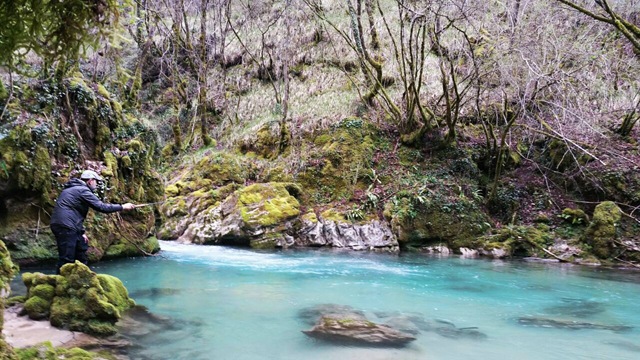
Fixed line and a Simple Fly in Simbruini
Now, we know that all fly fishing around the world originated with horsehair “fly” lines (lines cast using a “fly-casting loop” rather than by the addition of weights or the weight of the fly). So what do you imagine the tackle and tactics that developed in each of the three typical environments desribed above?
I think you’ll picture something pretty close to reality – as you can see from these “examples from the spectrum”…
Valsesia – An “Outside” Example
Let’s take the middle landscape example first (since this fishing style is a bit better known – and also it is from OUTSIDE the Apennine regions).
You might already have heard about “Pesca a mosca Valsesiana” – it traditionally features river-cane rods (Arundo donax, or the “giant reed”) up to around 4.5 metres long. Casting lines made out of furled horsehair (white is preferred) that tend to be a bit thicker and a touch heavier than many traditional horsehair tenkara lines. Possibly this comes from the relative stiffness of Arundo donax – where some extra line-weight is useful to “load” the rod.
Flies are hand-tied without the use of a vise – and their designs, colours and proportions are strikingly similar to those “spider” patterns found in the Northern counties of England – as well as soft/long hackled Scottish patterns (e.g. in the Clyde style). Typically three or four flies would be fished on a cast (compared to the normal, single, fly seen in both keiryu and honryu tenkara – however there are historic records showing some traditional Japanese fly fishing methods with MULTIPLE flies attached to a cast, but that is another story again).
Flies like the ones you find in Valsesia seem to have travelled from the mountains of continental Europe along with Christianity and so found their way to Britain.
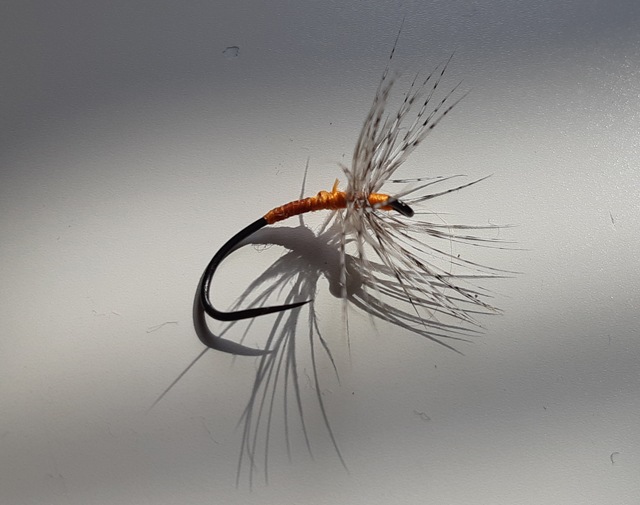
The Valsesia rivers (which are in the Piedmont region of Northwest Italy) are pretty much the half-way condition between the headwaters versus the lowland/larger settlement river reaches found in Apennine regions.
Interestingly, then, the rods are quite a bit longer than those used for the methods of forested uplands while still being significantly shorter than rods from the sprawling lowland reaches…
Southern Apennines: Scuriazzo or Scriazzo Fly Fishing
Places such as Abruzzo, Molise and Campania have a geography of higher mountain streams – PLUS relatively short rivers with smaller the river mouths where they join the sea. Overall you find generally smaller watercourses with tree cover a common factor. Couple this with the finding that all over this area you have an ancient fishing style referred to as “Scuriazzo”. When you realise that scuriazzo (often shortened to scriazzo) means “horsewhip” in Italy, you get a great mental image of the method.
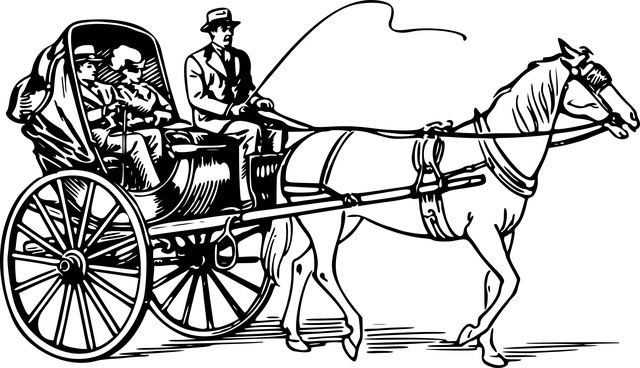
The rods are quite a lot shorter than those you find used in Valsesia – but the horsehair casting line is definitely a common factor. In addition, hand-made/no vise flies that resemble North Country Spiders (or, more pertinently, Valsesia flies) are also a feature of this fly fishing tradition and give a strong “family resemblence” to the Valsesiana style.
Because there is no formal written history and this is an extremely old style of fishing, at the moment we don’t have complete information on rod materials. Having said that, there are many kinds of local “river cane” (large reed varieties) that would do the job; so fair to say that Scuriazzo anglers would probably use whatever was available locally.
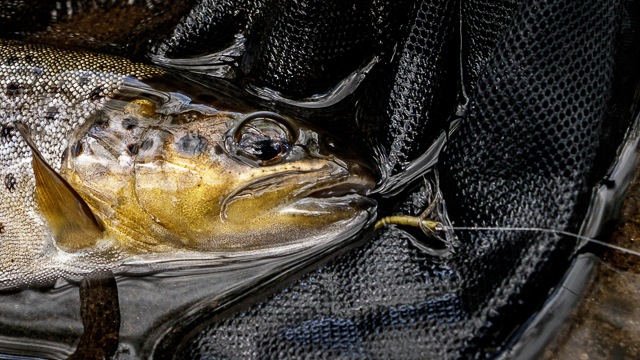
“Valsesia-style” fly and a trout that found it very tempting
AND – there are some wonderful personal examples
The Sangro is the valley neighbouring Aventino (more on which below). In turn, Castel di Sangro is the site of a highly significant fly fishing museum. Old generation anglers also made flies by hand – without a vice and is basically a perfect embodiment of a traditional fly fisher, rooted in the landscape that he grew up in.
Overall, a brief – and so perhaps slightly cheap – characterisation “Scuriazzo” seems to be basically a shorter version of the Valsesiana style…The more overgrown landscape/smaller rivers certainly appears to influence choices towards shorter rods compared to Pesca a Valsesiana.
Now to complete the picture at the other extreme…
Northern Apennines: Frusta Fiorentina
OK – so “frusta” is another word for “whip” (you can probably see where this is going!) and “Fiorentina” means “of Florence”. Casentino is in the northern part of Apennines. Down the valley from Casentino is Florence and as you progress downstream the river, naturally, keeps growing and growing…
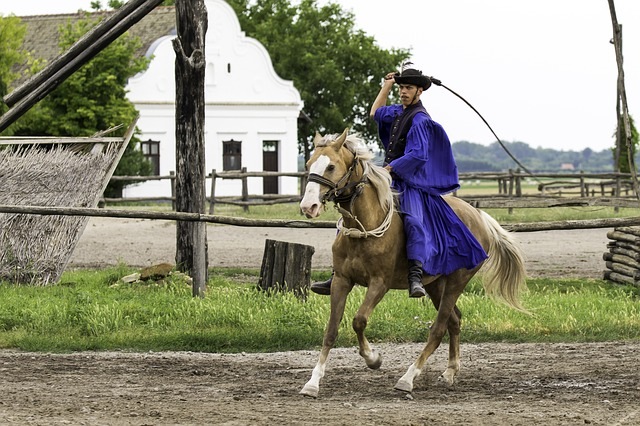
By the time the river Arno reaches Florence it is a HUGE watercourse. Around those wide, slow-flowing lower-land reaches around the city of Florence, you start to see the ancient fly fishing style known as “Frusta Fiorentina”.
It involves much longer rods (normally around 6-m long), much longer lines, wading up to your chest (which is only possible in slower-flowing reaches of course). Those long line/long rod setups would be used to present multiple flies on a cast (thought to be around 4 flies – but it’s interesting to note that traditional British fixed-line fly fishing styles could use as many as 12 flies on the same cast!)
Therefore if Scuriazzo is the fly fishing of small/well wooded mountain streams (much like genryu and keiryu tenkara) – then Frusta Fiorentina is perhaps a half-decent twin for “Honryu tenkara” methods in Japan.
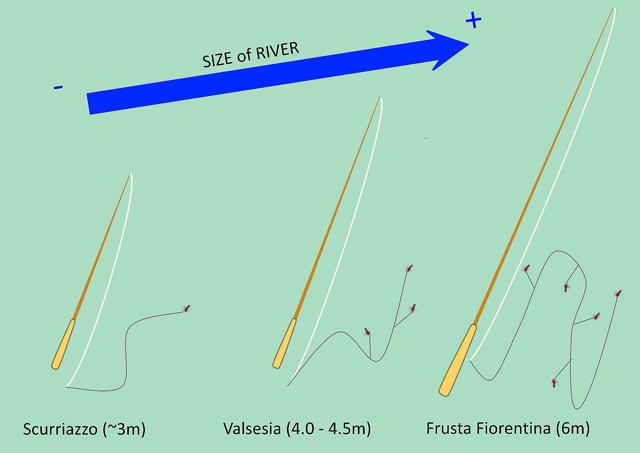
It is an interesting comparison between those Italian and Japanese methods – and highlights again how these methods arise independently and then almost unavoidably converge towards quite similar solutions over time.
At the same time it is very important to recognise the strong, local personality that runs through the spectrum of methods found in Italy. Between the scuriazzo of the wooded mountain headwaters and the 6-m, powerful rods of Frusta Fiorentina there is a connecting thread.
That thread is the Apennine spirit. Let’s experience this spirit in more detail by enjoying some stories of the Apennines…
Fishing in Italy: The Character and Stories of the Apennines
“Flavour” of the Apennines
The fishing in any part of the world is embedded in the surrounding culture and regional personality. That means it is much more enjoyable when you get a feel for those regional characteristics (and as you’ll see in the photographs of the rivers below, the area itself is stunningly beautiful).
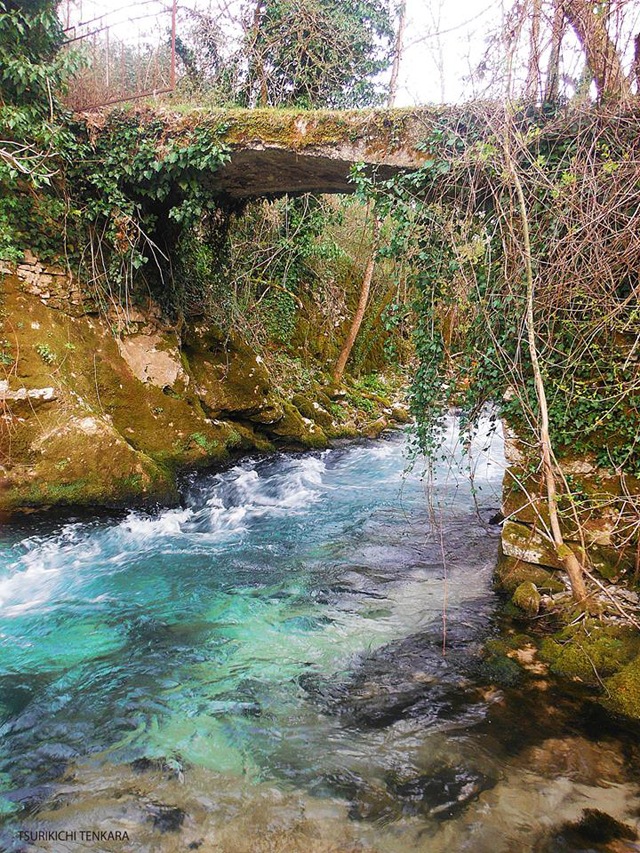
The fishing in Italy is no different – and you really benefit from getting a feel for each region’s atmosphere.
To start to give you a flavour of the area, many Spaghetti Westerns were shot in the Apennine region where the mountains, plains and climate doubled for the Wild West in the USA. Two huge stars in Italy and beyond were the movie actor duo Bud Spencer (real name: Carlo Pedersoli) and Terence Hill (real name: Mario Girotti). One of their most renowned films is probably “They Call me Trinity” if you need an introduction. Bud and Terence really were masters of the “Comedy Western”:
Amazing Fact – Bud Spencer (Vito’s hero) recorded a special video speech for Vito and Laura to be played at their wedding!

While the environment is often quite lush and full of wildlife – the people who grew up in mountain region communities had to be extremely tough (which is also inkeeping with the Wild West/Frontier personality too). Two perfect examples would be the boxer Rocky Marciano and the writer John Fante.
Rocky Marciano (Real name: Rocco Francis Marchegiano – but simplified to make it easier for the American public to relate after he emigrated!) was born in an Italian family coming from the Abruzzo village of Ripa Teatina – a stone’s throw from Vito’s Grandparents. He retired undefeated – and his relentless style, endurance, punching power and granite chin are a perfect embodiement of the Abruzzo character.
John Fante’s writing has a clarity and emotional honesty that is so effective in describing the tough ordeals faced by his characters. He is cited as a highly significant influence on Bukowski – another author with a talent for portraying hard times. Fante’s family came from Torricella Peligna – another village adjacent to Vito’s Grandparents (Casoli)! The spirit of Abruzzo and Casoli comes through in his writing even though he was born in Denver, Colorado after his parents emigrated there.
The “Lazio to Abruzzo” Cross-Section
We’ve already examined the span from the South of the “backbone” to the Northern regions by looking at the full expanse of the Apennine chain as the thread that runs along the full spectrum of short “Scuriazzo” to ultra-long “Frusta Fiorentina” fixed line, traditional fly fishing. Now here is a trip across the Central Apennino…
Vito grew up having his fishing experiences in the Central Apennine region Lazio (the modern version of Latium, the seat of Rome). While Rome is on the Mediterranean side, Abruzzo sits toward the Adriatic side – and this crossing of the mountain “spine” brackets the area of the central Apennines of Vito’s childhood. You can see the relatively lower (green) altitudes of the “Appennino” (the Italian name for the Apennines) compared to the Northern Alps – which are covered in snow – on this relief map:
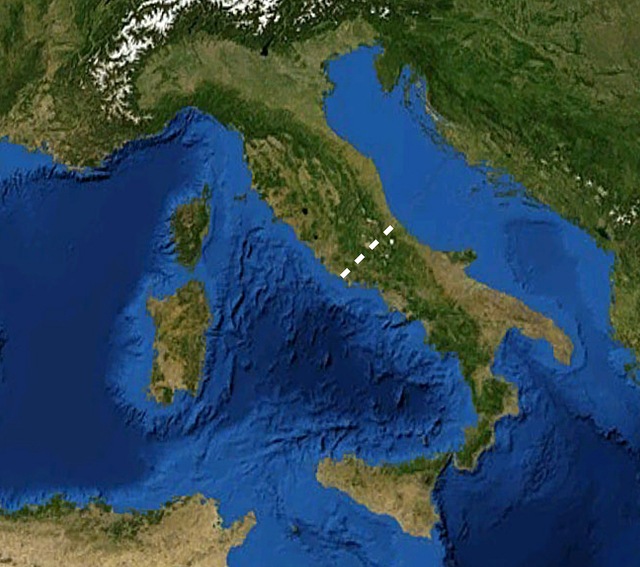
Since I can’t decide which side of the mountains to start on, let’s begin in the middle…
Simbruini
In the middle between Lazio and Abruzzo (in fact the region forms the border between the two) – you find a set of mountains forming the national park known as the Monti Simbruini. The name Simbruini comes from the latin “Sub imbribus” or “Under the Rains”. This gives you a hint that these mountains are excellent for greenery and rivers!
Subiaco is a city considered to be the gateway to Simbruini – with Rocca Santo Stefano as a neighbouring village. Rocca Santo Stefano is where Vito and Laura moved when they left Rome to set up home with her pack of beautiful dogs and Vito’s fishing paradise.
For example, just 12 minutes from Vito’s home is Lago di San benedetto – which I’ll think you’ll agree is “fairly pretty”:
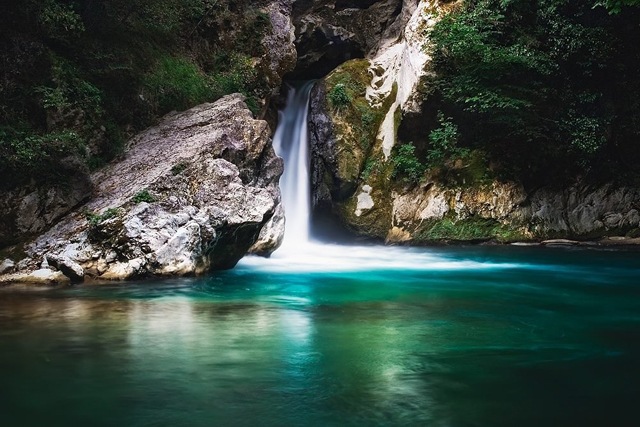
Fishing Beneath Italian Mountain Monastaries
This area is famous throughout history for both arduous religious pilgrimage and hermits who have retreated to a life of austerity and hardship in the mountains.
In addition, the “Sanniti” were the indigenous peoples of these borderlands – and they were so tough that the Romans could not beat them! In the end the Empire of Rome had to say – well, you guys are just like us so here is an official “Pari” (a “pass” to recognise them as equals and act as a truce).
So fierce were the Sanniti – there is even a famous saying about the small Sanniti city of Celano in Aquila province:
“Go against the Sultan – but DON’T go against Celano”
You have been warned.
Valley of Saints and Tears
Rocca Santo Stefano lies along the Valle dei santi e dei pianti “Valley of the Saints and tears”. So, as well as the feelings of spirituality and religion inspired by these mountains – the “tears” part of it is a reminder of the hard life endured by people. At the same time, the tears also hint to the rains that keep the forest lush in the same way as implied by naming of Simbruini/Sub Imbribus.
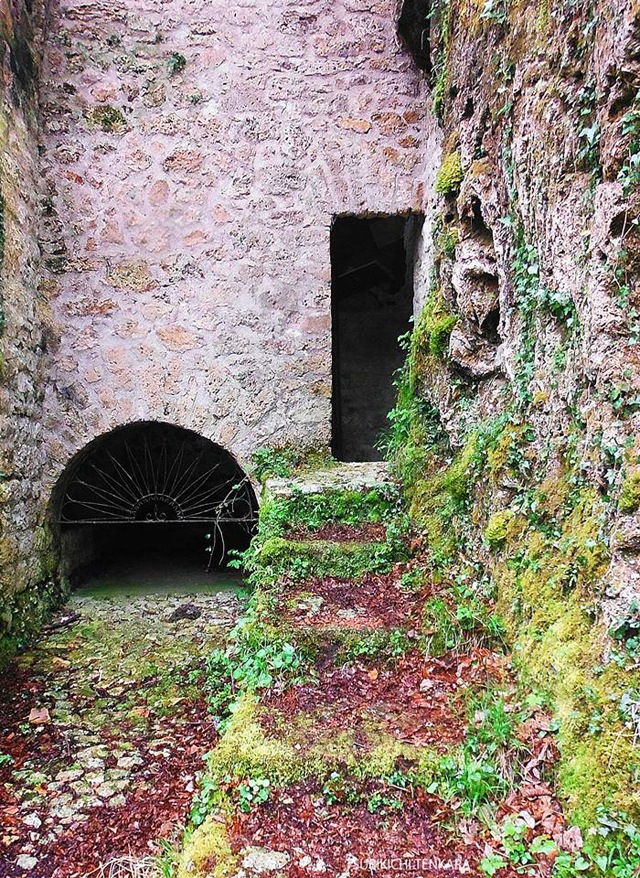
The rich history of the area hangs in the air – for example, the Benedictine monastary Monastero Santa Scolastica is a spectacular monestary – also 12 minutes from Vito’s house! And don’t forget the “Sacro Speco of Subiaco” – literally cut into the rock in a spectacular valley (go to the 7 min and 9 seconds point in the video below to see it:
Here, the very first book in Italy was printed within the walls of Santa Scolastica 550 years after Gutenburg and the invention of the printing press in 1465. A unique font called “Subiaco type” invented here – and, obviously, is associated with this paradise gateway city of Subiaco.
You can also see some of the perfect little wild trout that you might find on your own “pilgrimage” explorations of the Simbruini region here:
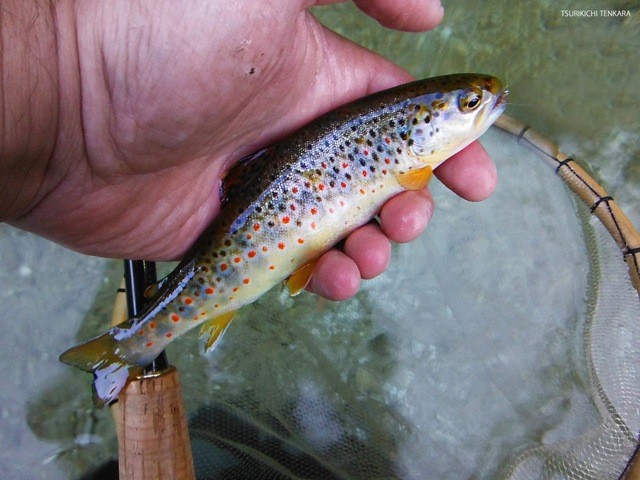
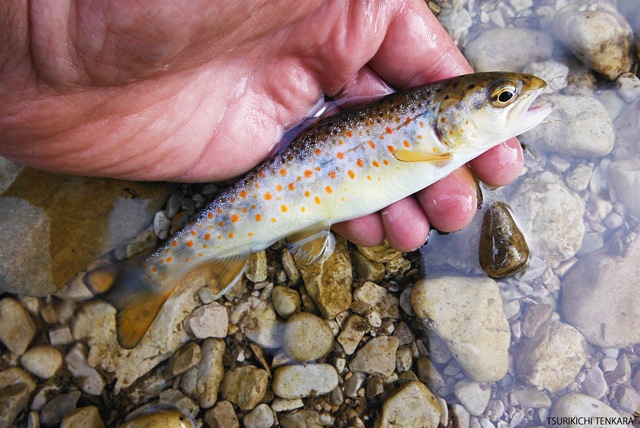
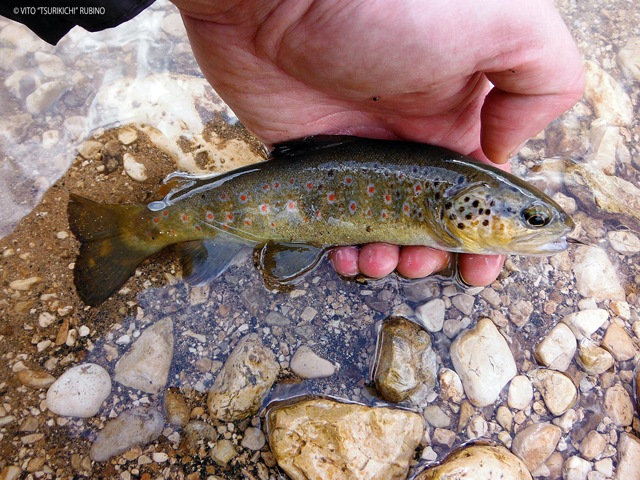
You can explore more of Vito’s memories and discoveries from this region in this “Fishing under the monastries” photo album:
https://www.facebook.com/pg/TenkaraNoKill/photos/?tab=album&album_id=731784280253892
Sharing the Special Nature of Central Apennines: Canyoning and Fishing in Italy
Vito began to think these beautiful experiences should be shared – because they are not known outside the region. The rivers are full of wild fish, perfect for all forms of river fly fishing and especially suited to tenkara or other traditional fixed-line mountain styles.
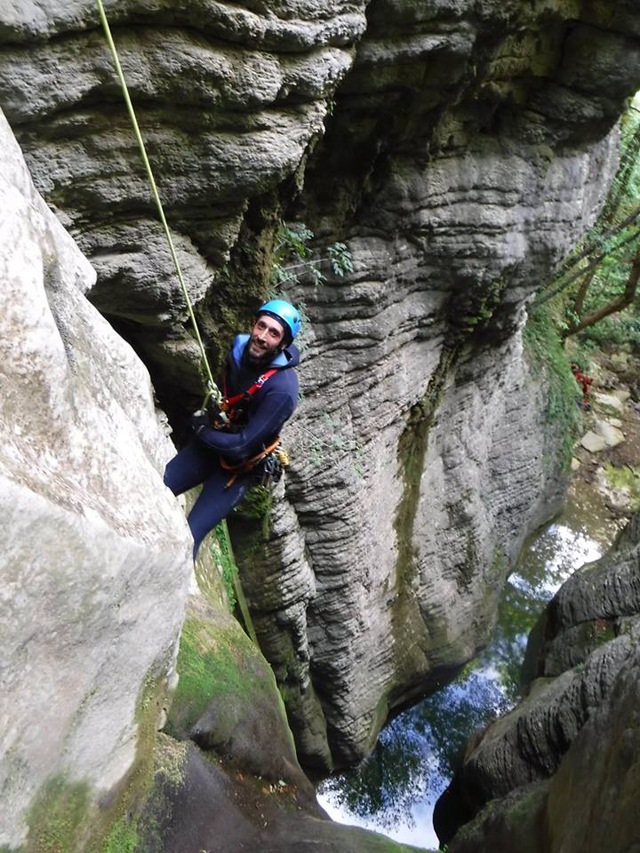
Plus, in another link with Japan, the rivers, valleys and mountains are a paradise for canyoning. In Japanese “genryu” fishing, there is a natural partnership between “sawanobori” (waterfall climbing/upstream canyoning) and fishing in the mountain headwaters.
Vito has made a great friend and contact in Alessandro Mecci – a top level hiking instructor and canyoning guide; so there will definitely be some really adventurous fishing expeditions and stories to tell.
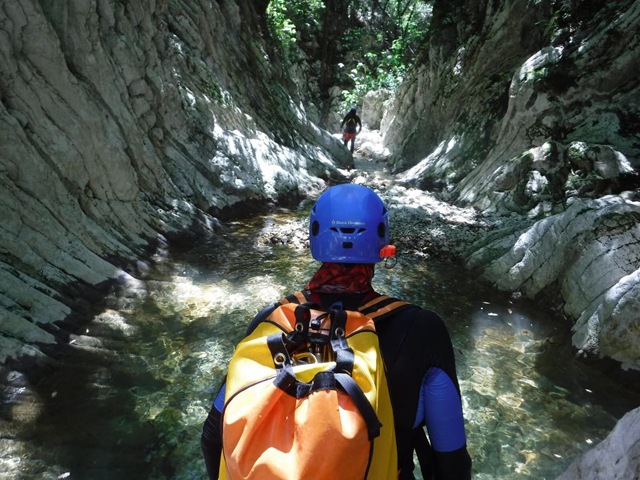
Subscribing to the Italian Stories Email list will guarantee that you’re the first to see and hear those stories and others:
The Abruzzo Side of the Spine
Going towards the Adriatic from Simbruini, you stumble deep into Abruzzo; another wild region. A large peak, Gran sasso, is known as the “Father of mountains” in central Italy (and forms the centre of another national park). If you trace a line southeast you will come to Majella – a shorter peak known as “The Mother of mountains. Fittingly, Vito’s mother comes from Casoli at the foot of Majella mountain.
Always remember, Abruzzo is wild – and is an area that wolves and bears still survive (and they sometimes get a bit lost)
Abruzzo Fishing
It was in the lake formed by the damming of the Aventino river at Casoli where Vito caught his first tench – using worm dug from manure piles. The tench was Vito’s first “respectable” fish – worthy of bragging rights in these villages!
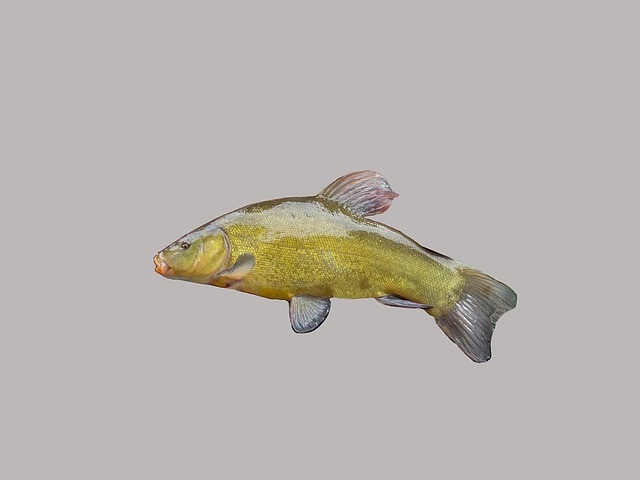
Bragging rights or not, fishing on the lake was still easier than tackling the fast-flowing Aventino river (where everything happens quickly and tackle is difficult to control).
That meant it took much longer before he caught his first trout. Even with Vito’s famous puppy-eyes, the renowned trout anglers on the Aventino savagely guarded their fishing spots from EVERYONE.
Eventually though (and with enough experience on many different trout rivers in Italy), you might be able to join the ranks of those steely-eyed expert anglers and catch yourself a “Grandma Trout”.
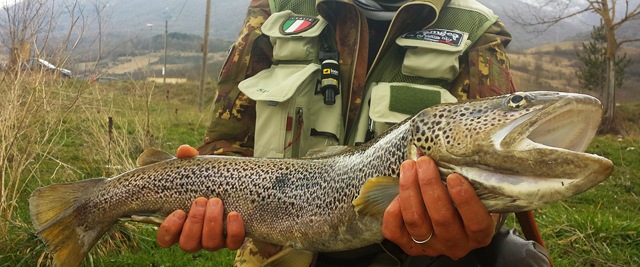
This is the nickname for big specimen trout in Italy – and these DEFINITELY come with bragging rights attached…but I’m getting off track..
Abruzzo’s Major Rivers
Along with the Aventino, the Sangro valley has the most important river of that area. The Sangro is a big river and it passes through many populations.
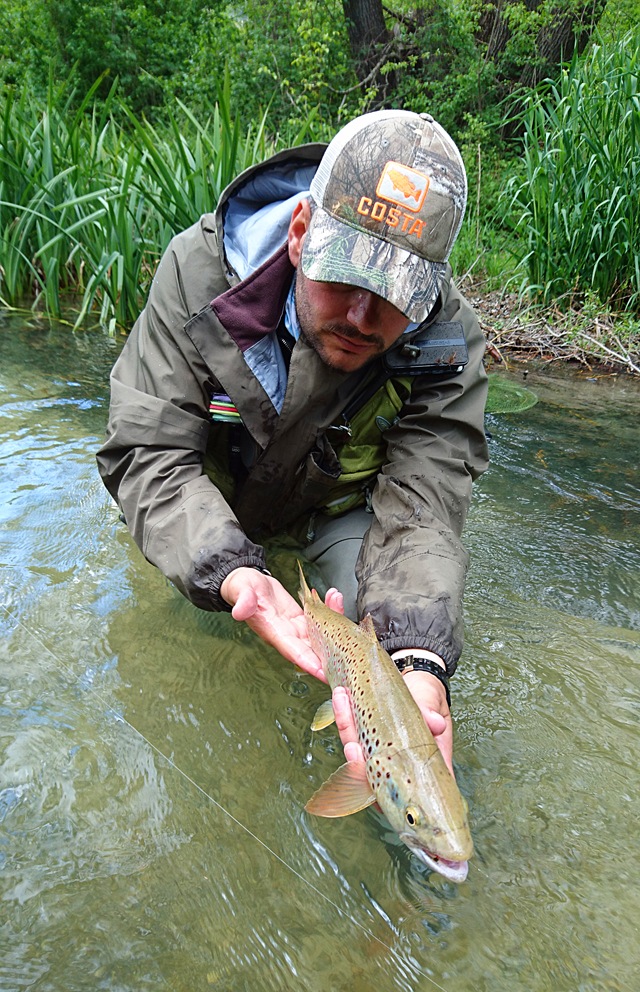
There are lots of trout in upper reaches, plus barbel, perch, eels and other coarse fish in large numbers lower down. It has also been a major source of sand and gravel as raw materials for construction (in other words, it is quite literally embedded into the fabric of these settlements). On top of that, fly fishing is held in high regard in the area and there are extensive No-kill (catch and release) “fly only” areas of fishing.
To reflect that importance, as we mentioned above, the area has the Fly Fishing museum at Castel di Sangro. In the grounds of the museum, there is even an impressive statue of a fly angler that reinforces the high status of fly fishing within the region:
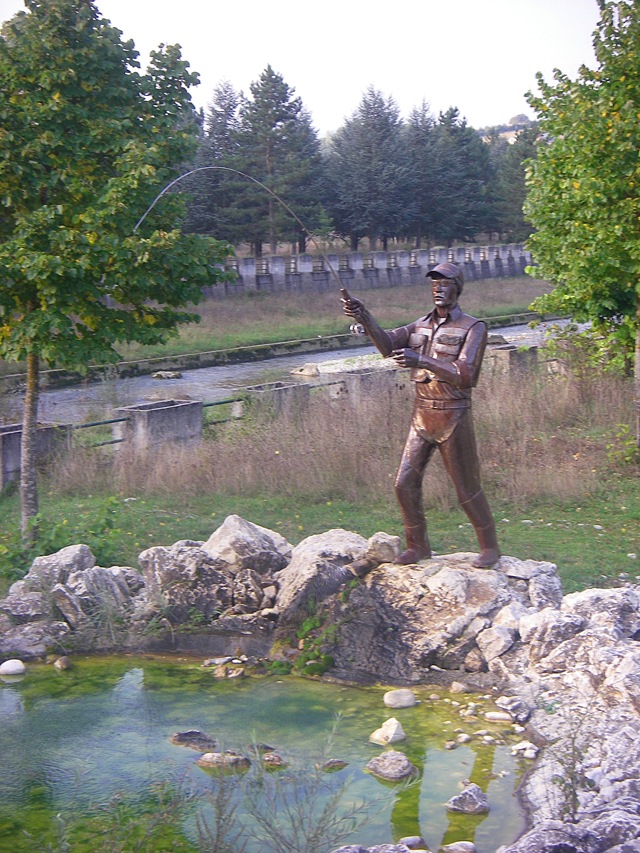
The Lazio Side of the Spine
Back to the Lazio side and Roman history. Fishing was VERY important for the Romans – for food and fun. Because of this (and the advanced culture of written record keeping as well as artistic writing) there is a lot of fascinating historic evidence about fishing available for those who are willing to dig.
One very quick example is the story of Vito finding out (while researching Roman treaty on fish farming!) the Roman slang for “seabass” was “lupo” or wolf. Wolf of the sea is a very nice description of seabass I think.
But what about trout?
Nero and the Golden Landing Net
On the Aniene River a Benedictine monastary was built and became a site for pilgrimage. In this area, Emperor Nero had a villa. Nero is said to have fished for Aniene trout with a a golden net – in case the villa was not ostentatious enough. Whether or not this is true, Nero was certainly not a fellow to be renowned for restraint and austerity – so it is nice to think that the king of bling might have actually fished this way for real!
Fishing in Italy: Italian Chalkstreams, Cicero & Buffalo Pastures
Now we get to some really surprising stories of things that you may be shocked to find in Italy. Let’s start in Ciociaria…
Ciociaria is the southern part of Lazio with Frosinone being the main city of the area. Here, there is a broad, flat, lush landscape quite unlike the mountain rivers we have described so far. Because of this geography, the limestone/spring-fed streams that run crystal clear through this lush landscape are really very similar to the chalkstreams of England.
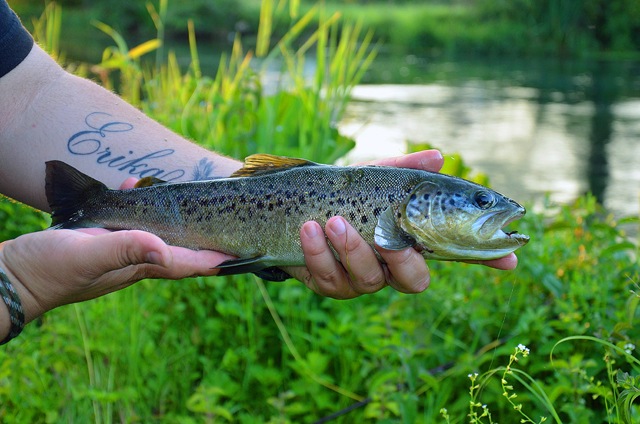
Just as English chalkstreams were historically modified to create intricate water-meadow irrigation systems, Italian Cowboys – known as Butteri – managed these areas as irrigated pasture for buffalo. In fact, one of the more inventive ways of clearing those managed channels was to herd the buffalo into the channel and then force them to tramp downstream as a kind of “woolly dredging unit”.
These spring-fed river & pasture systems are where the famous Buffalo Mozarrella (“Mozarrella buffula”) was born.
The Roman poet and writer Cicero narrated many, many stories associated with these environments. In fact, he was so fond of one particular river that it became known after him…
Major Rivers of Ciociaria & the Cicero Connection
There are two particularly significant rivers of this area – The Fibreno and The Santa Susanna.
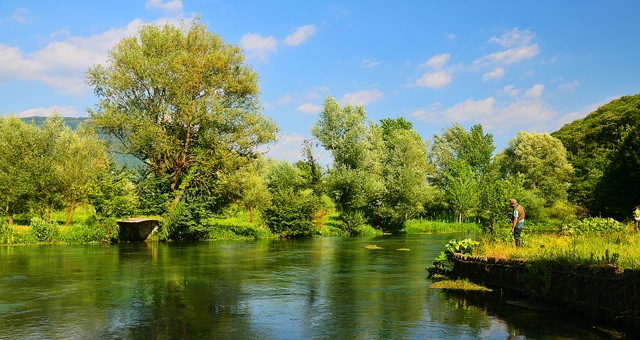
Over time, the Fibreno river became known as the Cicero river. This was partly because he wrote about it so much – but also because he was born there. The river itself emerges from the lower end of a famous lake: The “Lago di posta Fibreno”.
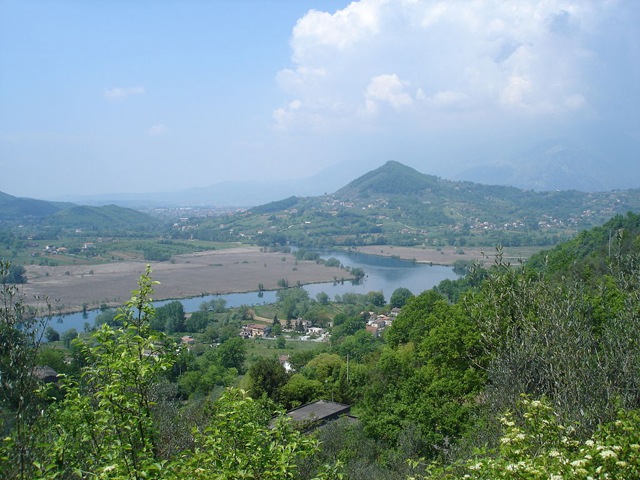
Lago di posta Fibreno
Do you remember the Roman treaties and papers that Vito found out about “Wolf/Seabass”? Well some of these contain early evidence that the Fibreno lake and river system contains a unique trout...
That species of trout is now known as Salmo fibreni and is officially recognised by modern fisheries science.
Of course, Italy is no stranger to special members of the trout family tree – with examples such as Salmo cetti, Salmo macrostigma and Salmo marmoratus to encounter in various river systems.
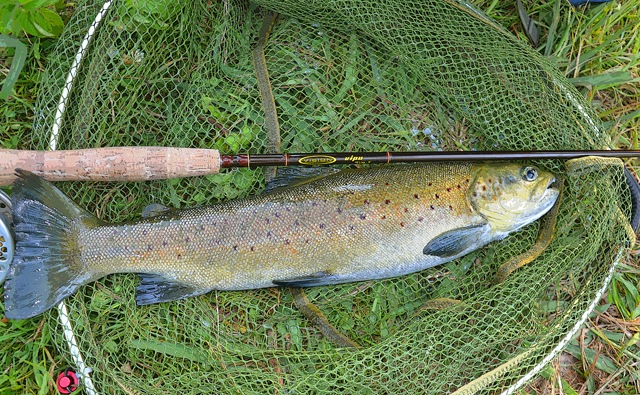
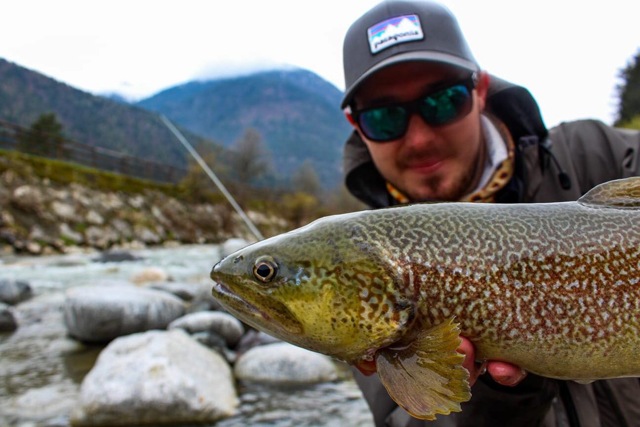
The “Butteri” vs. Buffalo Bill
I’ve saved this Appennino story for last, and I think you’ll enjoy it (particularly now you have a feel for the toughness of people)…
The famous showman “Buffalo” Bill Cody toured the world with his bison hunting/cowboy show – and Italy was one of the destinations as part of the European leg of his tour. He held a huge event with Rome as a naturally highly prestigious venue.
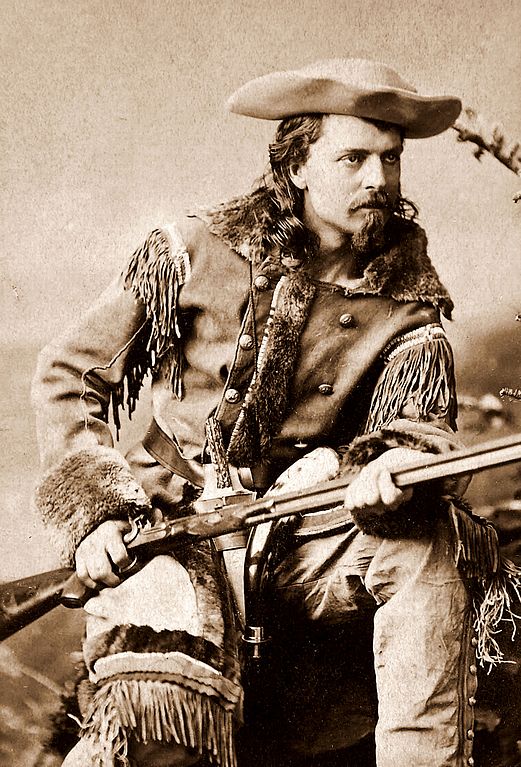
Now, the Butteri (as we know) are the Italian “cowboys” originating from Southern Lazio to Southern Tuscany. Since there was already an existing tradition of Butteri “rodeos”, these guys were very keen to see what Buffalo Bill and his crew were made of.
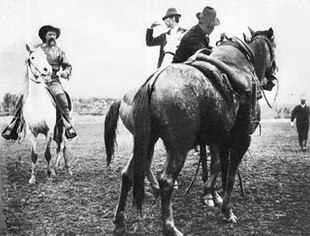
The Buffalo Bill’s Show “Wild West” on its way to Rome made a stop in Cisterna di Latina (a famous Butteri village less than an hour by car going south from Rome) and they ended up making a bet about taming a horse; who could do it fastest – the Butteri or Buffalo Bill. The story goes that the Lazio Butteri won that bet hands down….BUT, the story also has it that Buffalo Bill left town early in the morning without paying up on the bet!
We are told that “Augustarello” was the nickname of Augusto Imperiali, the Butteri individual who bested Buffalo Bill.
…Go against the Sultan…BUT…
And – just in case you need any further convincing – this is what you’re expected to be able to do in your 80’s in the villages where Vito’s family grew up:
OK – I think that the next place we should go (in Part 3) is to accompany Vito in pursuit of large, sleek seabass in Orbetello and if you want to be sure to catch that (as well as the exclusive insider updates and even sometimes a special subscriber offer) click below to apply for your free membership spot on the list:
Paul, Vito & JP


Trips?
Hi Kerry, yes it’s possible and the best way to stay in touch on that is to sign up for the specific email updates.
Over time we’re also looking at combining an exclusive coaching programme (completed by a combination of learning resources and live coaching/Q&A via webcam) which will include a “graduation experience” in Italy where you get to put all your new skills into action.
Watch this space (and your email inbox if you sign up)
Important: If you do subscribe, you need to click the “confirm” link in the Confirmation email that is sent out.
This is called “double opt in” and is there to make absolutely sure that you want to receive updates.
Without clicking that confirmation link, you won’t receive any updates (and I’ve just amended the “Congratulations” page to stress that!).
Seems there’s quite a few folks landing on that “Congratulations page” that are not actually as Subscribed as they think they are!
Paul and Vito
Looking forward to this series.
Following a lot of fascinating conversations with Vito on the many, localised, traditional forms of Italian fishing (less well known that Valsesiana for instance) – I’m also really looking forward to this series David 🙂
Paul
Ottimo lavoro Vito! I’m grateful to you and DT guys for spread our giant fishing culture. It can be very interesting also a sharp analysis between japanese and italian approach of fishing due to very close geography and River features.
Thanks again and wait for next episodes!
Paolo
Ciao Paolo – molto gentile 🙂
I am amazed how similar the experience of fishing in Italian rivers is to the experience of fishing in Japanese rivers.
Many times, You have to look closely at the plants growing next to the river to tell the difference!
Paul
Scrivo in italiano:
Complimenti a tutti, specialmente a Vito che porta l’Italia nel mondo!
Mi ritrovo in questo primo racconto, potrei essere io, con Sampei e tutto il resto.
W la Tenkara e w la va Valsesiana!